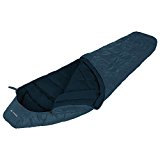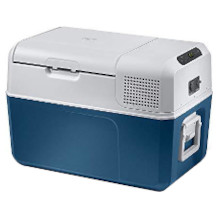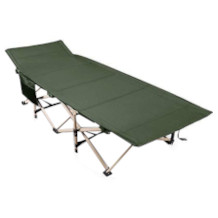Sleeping mat purchasing advice: how to choose the right product
- What You Need to Know
- Sleeping mats are comfortable sleeping surfaces for indoors and outdoors.
- They are suitable for all outdoor activities such as camping, as a sports mat or as a spare sleeping mat at home.
- There are both inflatable and self-inflating models. Some mats, on the other hand, are not filled with air.
- When buying, the degree of insulation, the dimensions, the weight, the material and the coating should be the main considerations.
- The R-value of a sleeping mat indicates the degree of insulation: the higher the value, the higher the thermal insulation.
Sleeping comfortably thanks to sleeping mat
Sleeping mats are a sleeping surface that contributes to comfort in a variety of situations. Since they can be used both indoors and outdoors, depending on the model, the uses are as numerous as the different models. It is important to know that sleeping mats do not warm, but insulate. They are there to shield the body from the ground and keep out cold and moisture. As the name suggests, they are mats with insulating material. The degree of insulation depends on the product. Another factor that should not be neglected is protection against uneven surfaces such as stony ground or soil with tree roots.
Air mattresses usually without insulation
Classic air mattresses usually do not have an extra layer of insulation. Although they offer comfort, they do not protect against cold and moisture from the ground.
Especially for outdoor enthusiasts, the practical pad is part of the standard equipment. There is a suitable version for every type of excursion, for example camping or trekking. But even for outdoor enthusiasts who want to be less active, a sleeping mat has a high utility value: the lying underlay can provide comfort in the park, at the lake, on the beach or in your own garden. Its use is particularly useful on wet or cool ground. Furthermore, athletes often use insulated mats to have a non-slip surface during exercises both indoors and outdoors. Depending on the purpose for which you need a sleeping mat, you should choose a product with a high or low degree of insulation.
The models – simply (or) inflatable
Just like air mattresses, some sleeping mats can be inflated. Some models do this on their own by turning on a valve, other mats you have to actively fill with air. Air-filled products offer high comfort because they are usually very thick. But sleeping mats without an inflation function can be just as comfortable. The intended use is decisive for the selection. For example, if you want to go trekking by bike, you should go for small, lightweight mats that are easy to transport. For campers and holidaymakers travelling by car to the next camp or sleeping place, thick mats that offer the greatest possible comfort are suitable. However, inflatable sleeping mats are not always bulky; there are also small mats that support you with an air cushion and are still easy to transport.

Inflatable sleeping mats: Soft and warm
These models score with very good heat retention. Many sleeping mats that can be inflated have chamber or cell systems that are filled with air, or special fillings that minimise air circulation so that no heat is lost. Because circulation is prevented inside, the heat is stored. In addition, many models with their small packing dimensions are very small and can be transported easily. Most manufacturers recommend that sleeping mats should not be inflated by mouth, but that a special pump should be used. Moisture could get inside the mat through the breathing air and promote the formation of mould. Moisture also reduces the insulation properties of the mat.
Self-inflating sleeping mats: Maximum comfort
Self-inflating models are characterised by the fact that they are well insulated and can be packed easily. However, the weight of the mat can be somewhat higher than that of a simple sleeping mat. The air in the mat, which inflates automatically as soon as you unroll it, provides the necessary insulation. It is let into the mat via a valve: Turn it open and the mat fills with air due to the negative pressure created; then turn the valve closed again. If you want to pack the mat together, you have to let the air out first. To do this, also open the valve, slowly roll or fold the mat and press the air out of it. As soon as the mat has reached its pack size, close the valve again.
Simple mats: classics without air
These simple sleeping mats, which are made of foam, are among the best-known variants and are considered classics. They are characterised by their durability and lightness. Since no complex chamber systems are integrated here and the processing and production are kept simple, the products are usually significantly cheaper than the models that can be filled with air.
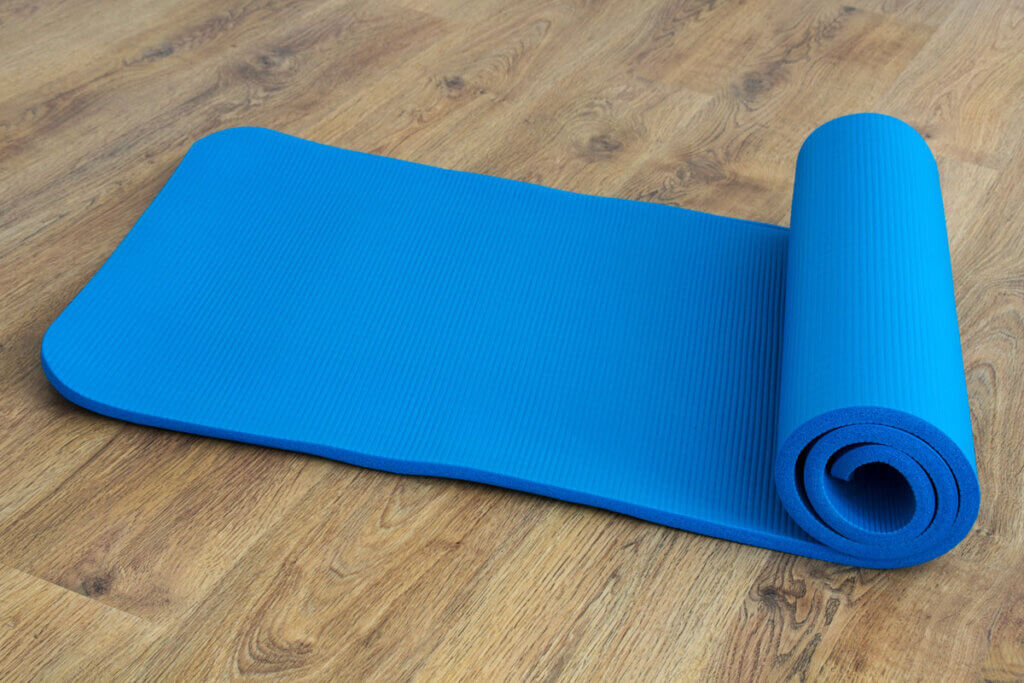
One disadvantage of these mats is their pack size, as there is no way to pack these models smaller. They are simply rolled up and tied together with a strap. Sleeping comfort is also usually higher with inflatable models. On the other hand, the mats are suitable for short trips or occasional use. So if you want to buy an inexpensive mat for a festival visit or a sporty training session, this is the best choice. Many outdoor fans also like to use classic sleeping mats as a simple seat pad. For better insulation, there are special models with an aluminium coating that keeps out cold and moisture.
The most important buying criteria
Trekking, camping, festivals, sports – depending on the purpose for which you want to use a sleeping mat, there are different important buying criteria. For example, it makes sense to choose a high-quality sleeping mat with a particularly high R-value if you are planning a longer trip to the mountains. For a short trip to the nearest lake, on the other hand, a large inflatable sleeping mat for maximum comfort is the better choice. In any case, it is advisable to find out about all the criteria. Above all, the R-value, the size and the weight are decisive when buying a sleeping mat.
The degree of insulation depends on the R-value
To find out the degree of insulation of a sleeping mat, you need to take a look at the R-value of the product. This indicates how high the thermal insulation is and for which temperatures the mat is best suited. More precisely, this value defines the thermal resistance. The abbreviation stands for the English word “resistance”. The values are on a scale of 1 to 10. A sleeping mat with an R-value of 1 has the lowest heat transfer resistance, while a model with a value of 10 has the highest possible resistance.
| R-value | Suitable for the following temperatures |
|---|---|
| 0 to 1 | From 7 degrees Celsius |
| 2 | Between 1 and 10 degrees Celsius |
| 3 to 4 | Approximately 0 to minus 11 degrees Celsius |
| 5 to 6 | Approximately minus 12 to minus 24 degrees Celsius |
| 7 to 10 | Up to minus 32 degrees Celsius |
Choosing the dimensions
Very straight, it is recommended that the mat is a few centimetres longer than you. If you prefer to sleep with your legs bent, the sleeping mat can be a little shorter to make it more manageable and easier to carry. However, you should then make sure that it is wide enough so that your legs do not fall down at the sides. Sleeping mats are usually between 180 and 200 centimetres long and 50 to 70 centimetres wide. The thickness is usually up to 10 centimetres. Most models are designed for the size of one person. However, there are also models that are twice as wide so that two people can sit comfortably on them.
The packing dimensions are just as important. When rolled up, sleeping mats are much smaller and easier to transport. Many models can be stowed in a separate bag; otherwise the rolled-up mats can be tied up tightly with straps. Then they usually have a diameter of less than 20 centimetres.
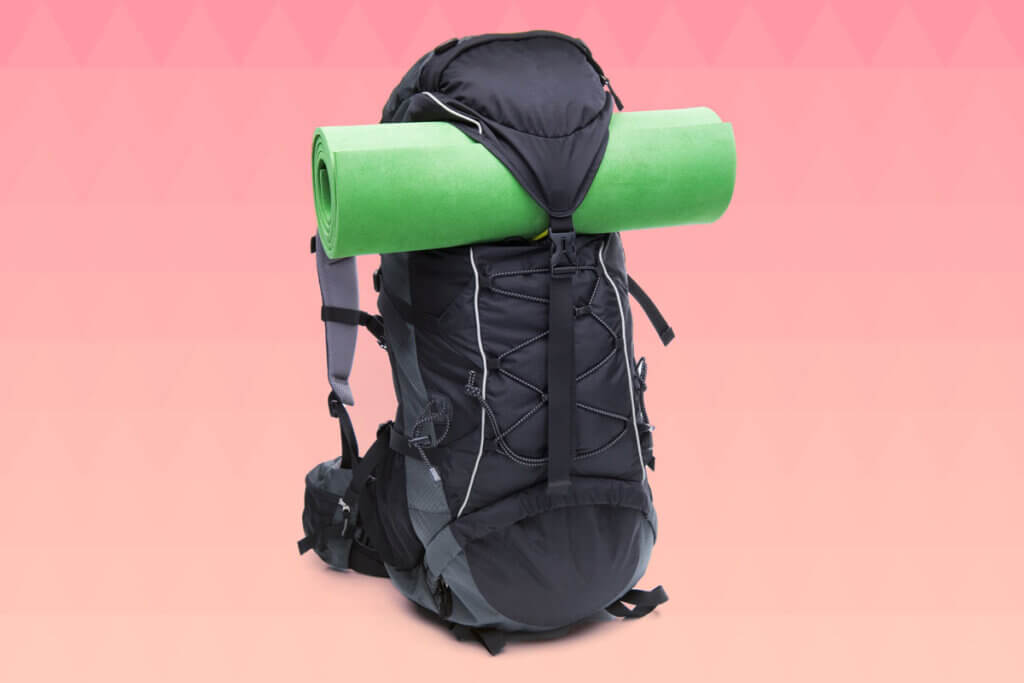
Through thick and thin
On average, sleeping mats are around four to five centimetres thick. If they are thicker than five centimetres, they offer a correspondingly higher level of comfort. However, such mats are heavier and more unwieldy to transport. In addition, the packing dimensions are larger.
Which mats are suitable for back problems?
To prevent back problems or to address the needs of existing problems, you should choose a sleeping mat with a minimum thickness of four centimetres. It is also advisable to choose a high-quality sleeping mat that only gives slightly when you lie on it. It should also be inflatable and very dimensionally stable, i.e. it should only lose a little air under pressure. Otherwise, an inflatable model is too soft and can cause back pain. In addition, the mat should be large enough so that you can lie down straight and do not have to bend your spine. An appropriate cushion can also help to put the body in a comfortable position.
Which mats are suitable for side sleepers?
Outdoor fans who mostly sleep on their side should choose a sleeping mat that is very thick. Thick mats insulate better and offer more comfort for shoulder and hip bones. A thickness of about five centimetres is recommended. Bear in mind, however, that such a sleeping mat is somewhat more unwieldy and is not always practical to carry on your bike or backpack.
Nothing lighter
Trekking fans who are travelling by bike or on foot, for example, should choose sleeping mats that are as light as possible. There are versions that weigh less than 200 grams. Light mats should not weigh more than 500 grams. Camping enthusiasts who want to be a bit more comfortable and go on holiday by car can certainly take more weight with them. Normal sleeping mats weighing 500 to 1,000 grams are recommended here. Particularly high-quality comfort products can weigh more than 1,000 grams.
Quality
Most sleeping mats are made of foam. The cheaper versions are often made of polyethylene foam, which is called open-cell. They lose cushioning more quickly. Higher-quality products are made of a closed-cell foam material such as ethylene vinyl acetate, or EVA for short. It is characterised by being more durable and absorbing less moisture than the open-pored material. The lower side of sleeping mats is usually made of polyester, the outer skin often of breathable nylon material.
Structure and coating
The surface structures of sleeping mats vary greatly: classic designs usually have a smooth or grooved surface.
Models with nubs or a waffle or honeycomb structure offer greater lying comfort because the surface has a stimulating effect. The underside of most sleeping mats is non-slip so that they stay in place even on damp and slippery surfaces. Sleeping mats with a surface coating of thermoplastic polyurethane are particularly popular because the material is durable and flexible.
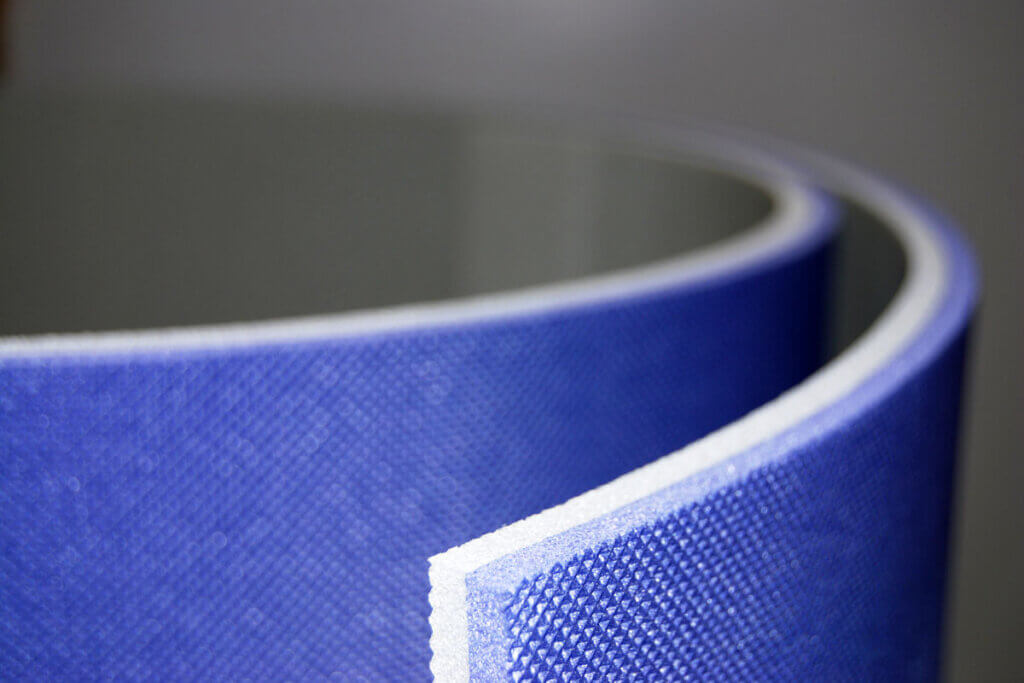
Storage, cleaning and repair tips
Below you will find practical tips on how to store, clean and repair sleeping mats.
Storing and cleaning a sleeping mat
Especially inflatable sleeping mats should be stored unrolled. Leave the valve open so that any moisture that may have formed inside can dry. Classic sleeping mats without air can also be stored rolled up. However, you should make sure that they are dry all around. Always store sleeping mats in a dark and dry place, as direct sunlight can damage the material in the long run.
Before using the mat for the first time, you should unroll or inflate it to check that the model is in working order. Then wipe the mat with a damp cloth. Heavier soiling that may occur during use should also be removed with warm water and a damp cloth. Make sure that the mat is dry again before packing it away.
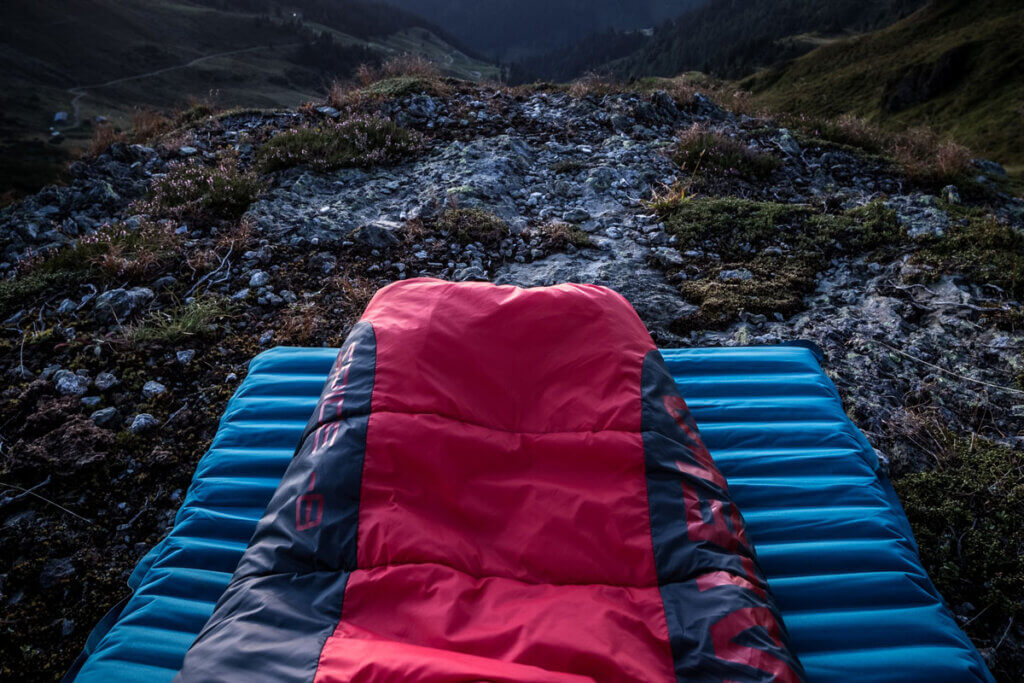
Repairing a sleeping mat
Many manufacturers offer repair kits specially made for sleeping mats. In some cases, these are already included in the delivery. It is also possible to buy such a kit later if the mat or the valve should become damaged during use. In principle, the repair works similarly to a bicycle inner tube. First find the tears or holes by inflating the sleeping mat, if it is an inflatable mat, and mark the spot. Clean the spot and let the mat dry. Glue up tears and holes with the glue from the repair kit. Let the glue dry and glue the whole thing together with a patch.

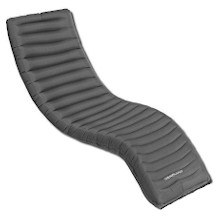
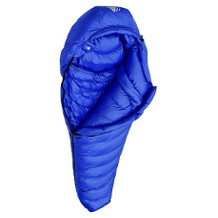
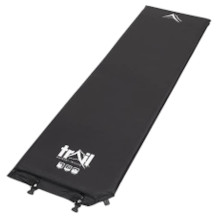
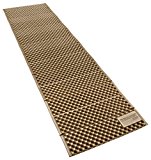

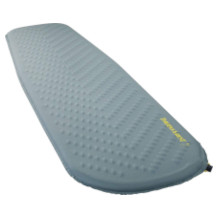
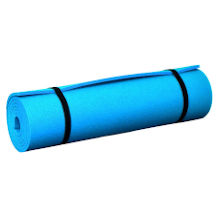
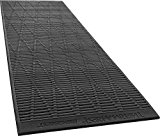
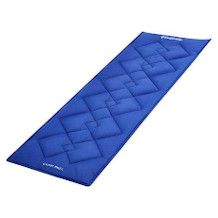
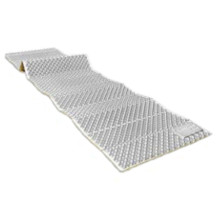

 1,832 reviews
1,832 reviews

